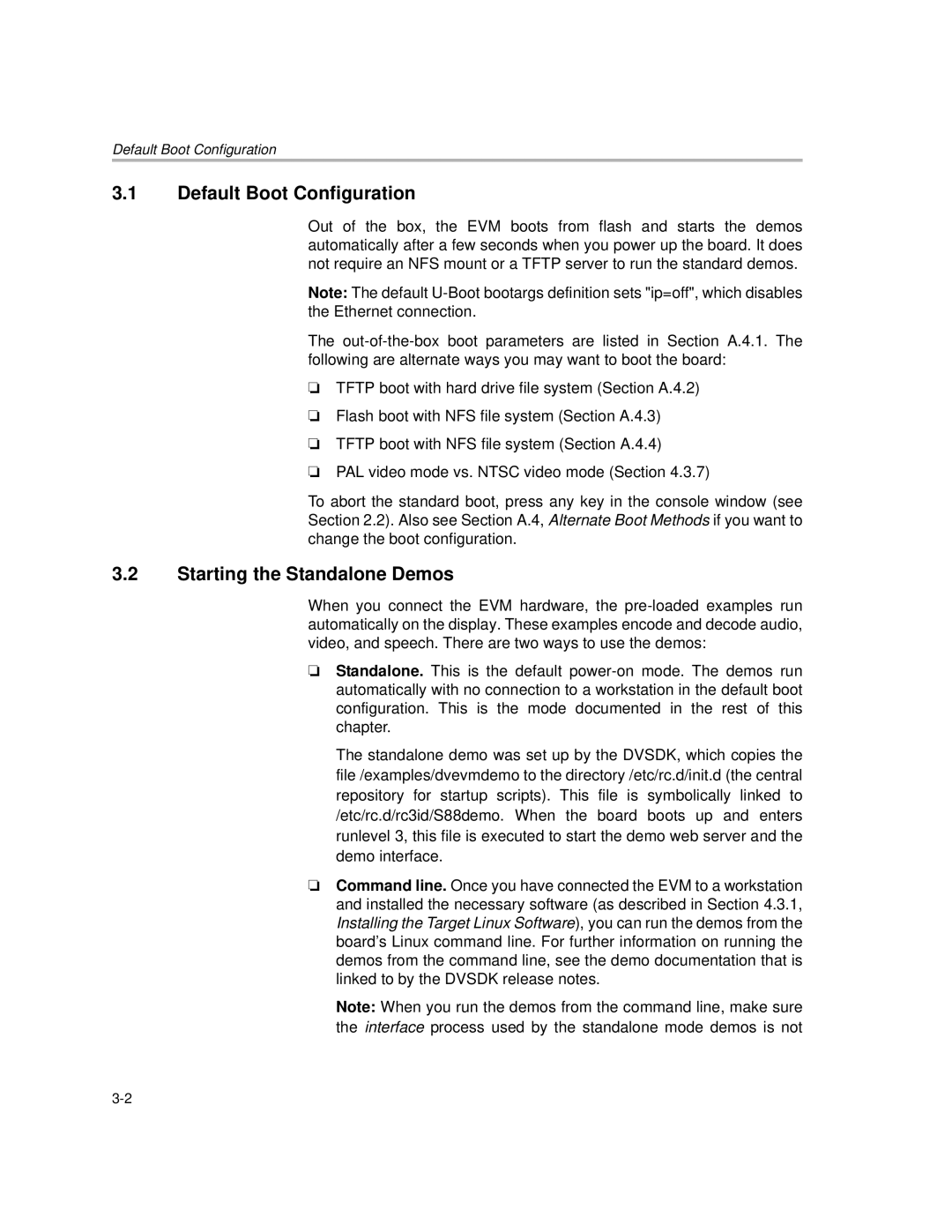Default Boot Configuration
3.1Default Boot Configuration
Out of the box, the EVM boots from flash and starts the demos automatically after a few seconds when you power up the board. It does not require an NFS mount or a TFTP server to run the standard demos.
Note: The default
The
❏TFTP boot with hard drive file system (Section A.4.2)
❏Flash boot with NFS file system (Section A.4.3)
❏TFTP boot with NFS file system (Section A.4.4)
❏PAL video mode vs. NTSC video mode (Section 4.3.7)
To abort the standard boot, press any key in the console window (see Section 2.2). Also see Section A.4, Alternate Boot Methods if you want to change the boot configuration.
3.2Starting the Standalone Demos
When you connect the EVM hardware, the
❏Standalone. This is the default
The standalone demo was set up by the DVSDK, which copies the file /examples/dvevmdemo to the directory /etc/rc.d/init.d (the central repository for startup scripts). This file is symbolically linked to /etc/rc.d/rc3id/S88demo. When the board boots up and enters runlevel 3, this file is executed to start the demo web server and the demo interface.
❏Command line. Once you have connected the EVM to a workstation and installed the necessary software (as described in Section 4.3.1, Installing the Target Linux Software), you can run the demos from the board’s Linux command line. For further information on running the demos from the command line, see the demo documentation that is linked to by the DVSDK release notes.
Note: When you run the demos from the command line, make sure the interface process used by the standalone mode demos is not
